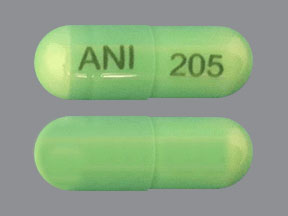
Nicardipine Coupons & Savings Card – Discount Prices from $225.18
My prescription
Edit
20MG, Nicardipine (180 Capsules)
Select pharmacy

CVS
$225.18
COUPON PRICE
Walgreens
$273.60
COUPON PRICE
Walmart
$315.99
COUPON PRICE
Albertsons
$405.02
COUPON PRICENicardipine savings card
Show this card to your pharmacist
CVS
$225.18
BIN
ID
PCN
GRP
019876
LHFBDB4D49
CHIPPO
LHX
Powered by
Related calcium channel blockers prescriptions
More prescriptions for hypertension
Related calcium channel blockers prescriptions
More prescriptions for hypertension
Nicardipine dosage forms
Dosage Quantity Price from Per unit 20MG 180 Capsules $225.18 $1.25 20MG 90 Capsules $121.59 $1.35 20MG 500 Capsules $593.50 $1.19 30MG 90 Capsules $147.33 $1.64 30MG 500 Capsules $736.50 $1.47
| Dosage | Quantity | Price from | Per unit |
|---|---|---|---|
| 20MG | 180 Capsules | $225.18 | $1.25 |
| 20MG | 90 Capsules | $121.59 | $1.35 |
| 20MG | 500 Capsules | $593.50 | $1.19 |
| 30MG | 90 Capsules | $147.33 | $1.64 |
| 30MG | 500 Capsules | $736.50 | $1.47 |
Nicardipine Warnings
This information outlines critical safety considerations and warnings for the use of this medication. Please read carefully and discuss any concerns with your healthcare provider.
Heart Health Concerns: Although uncommon, there have been reports of increased angina (chest pain) in individuals taking nicardipine (Cardene), particularly at the onset of therapy or during dose adjustments. This medication may exacerbate symptoms in those with congestive heart failure or who are concurrently using beta blockers.
Low Blood Pressure Symptoms: Nicardipine (Cardene) may occasionally lead to low blood pressure, resulting in symptoms like dizziness, lightheadedness, blurred vision, or fainting. This risk is heightened if you have a history of strokes. Your healthcare provider may need to adjust your dosage and recommend regular blood pressure monitoring.
Liver and Kidney Considerations: Since nicardipine (Cardene) is metabolized by the liver, individuals with liver dysfunction may experience increased medication accumulation. Similarly, those with kidney issues may have elevated levels of the drug in their system. Dosage adjustments may be necessary to prevent complications such as liver or kidney failure.
Contraindications: Do not use this medication if you have severe narrowing of the aortic valve (advanced aortic stenosis), as it may pose serious health risks. Always consult your healthcare provider to determine if this medication is safe for you.
Ensure that this information is thoroughly reviewed and shared with your healthcare professional to ensure safe use of the medication.
Nicardipine Side Effects
Common side effects:
- flushing
- swelling of the ankles or feet
- headache
- dizziness
- weakness
Less common but important to monitor:
- nausea
- indigestion
- dry mouth
- drowsiness
- rash
- muscle pain
- feeling of pins and needles
Serious side effects:
- fainting
- racing or irregular heartbeat
- vision changes
- severe allergic reactions
- worsening chest pain or heart attack
Nicardipine Interactions
Nicardipine (Cardene) can interact with a variety of medications and supplements, potentially altering its effectiveness or leading to side effects. It's important to inform your doctor and pharmacist about all the medications and supplements you're taking, including prescriptions, over-the-counter products, and herbal supplements.
Some medications might affect how your body processes nicardipine. These include azole antifungals like Itraconazole, macrolide antibiotics such as Erythromycin, rifamycins like Rifabutin, and seizure medications such as Phenytoin. Additionally, Cimetidine and St. John's Wort can also influence nicardipine's action in your body.
Certain products could increase your heart rate or blood pressure, so it's essential to consult with your pharmacist about the safety of using products like cough-and-cold medications, diet aids, or NSAIDs, including Ibuprofen and Naproxen.
There are specific drugs that are usually not recommended to be taken with nicardipine, but in some cases, it might be necessary. These include Atazanavir, Clarithromycin, Clopidogrel, Cyclosporine, Dantrolene, Digoxin, Droperidol, epirubicin, Fentanyl, Lacosamide, Tacrolimus, and vecuronium. If both medications are required, your doctor may adjust the dosage or frequency.
Additionally, using nicardipine with medications such as dalfopristin, Fluconazole, indinavir, Ketoconazole, Magnesium, quinupristin, and rifapentine can increase the risk of certain side effects. In such situations, your doctor might modify how you use one or both drugs to ensure safe and effective treatment.
